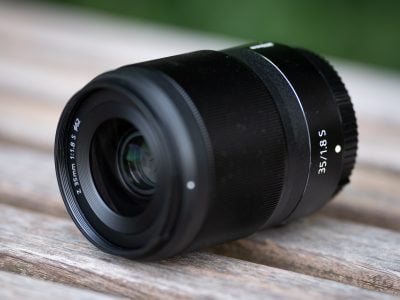Nikon Z 35mm f1.8S review
-
-
Written by Thomas
In depth
The Nikon Z 35mm f1.8S is a mild wide-angle prime lens for Nikon’s full-frame Z-series mirrorless cameras. A popular focal length for street photography and general-purpose use, it features an f1.8 focal ratio and joins the Z 24-70mm f4S as the first Z-series lenses on the market; the Z 50mm f1.8S will be the third at the end of 2018. Nikon’s Z-lenses may be the only models currently available with a native Z-mount but thanks to Nikon’s FTZ adapter, existing F-mount lenses can easily be used on their new Z bodies. So the new Z 35mm f1.8S faces competition from a host of other wide angle lenses with the F-mount, most notably Nikon’s own AF-S 35mm f1.8G.
As the Z 35mm f1.8S is a member of Nikon’s high-end “S” line it is expected to perform on a very high level. To find out whether the new Nikon Z 35mm f1.8S rightfully carries the “S” moniker I tested its optical qualities on the 46MP Z7 body against a few other lenses of which the Zeiss 28mm f1.4 Otus is my current reference wide angle lens. So if you’re interested in how Nikon’s first prime lens for their new Z system performs, you’ve come to the right place! PS – if you’re interested in the other Z lenses in Nikon’s line-up check out our in-depth reviews: Nikon Z 14-30mm f4.0 S review / Nikon Z 24-70mm f2.8 S review / Nikon Z 24-70mm f4 S review / Nikon Z 50mm f1.8 S review / Nikon Z 85mm f1.8 S review.
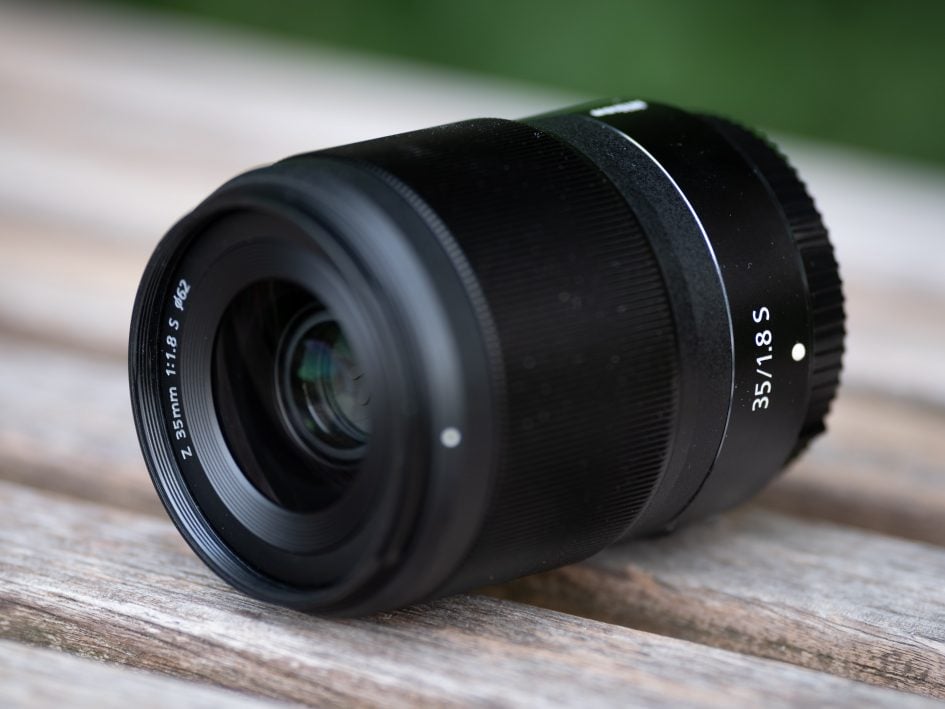
Facts from the catalog
As usual I’ll have a look at the technical data of the new Nikon Z 35mm f1.8S first. I’ve rated the features with a [+] (or [++]), when it’s better than average or even state of the art, a [0] if it’s standard or just average, and [-] if there’s a disadvantage. For this comparison I use the Nikon AF-S 35mm f1.8G (“F Nikkor” for short) and the Tamron SP 35mm f1.8 VC (“Tamron”).
Size (diameter x length): 73 x 86mm (2.9 x 3.4in.). The lens hood adds 48mm which is pretty deep for a wide-angle lens and gives good shelter in inclement weather. It is 89mm in diameter. The F Nikkor is 72 x 72mm and the Tamron is 80 x 78mm (both without lens hood). For an apples-to-apples comparison one has to allow for the differences of flange distance between the Z-mount (16mm) and the F-mount (46.5mm). So these 30.5mm (1.2in.) have to be added when using the F Nikkor or the Tamron – either on an F-mount DSLR like the D850 or by mounting it via the FTZ adapter on a Z7. Only the diminutive Nikon AF 35mm f2.0D with its stubby 44mm length is shorter even when mounted on the FTZ adapter. [+]
Weight: 364g (12.8 oz.) plus 30g for the lens hood. The F Nikkor is 305g (10.8 oz.), the Tamron 450g (15.9 oz.) plus 27g for the lens hood plus another 133g (4.7 oz.) for the FTZ adapter to use it on a Z7. Only the Nikon AF 35mm f2.0D at 205g is lighter even when mounted on the FTZ adapter. [+]
Optics: 11 elements (including 2 special dispersion and 3 aspherical elements) in 9 groups which is similar to the F Nikkor and the Tamron. The new Nikon Z 35mm f1.8S uses Nikon’s Nano-Coating to reduce flare, glare and ghosting. [+]
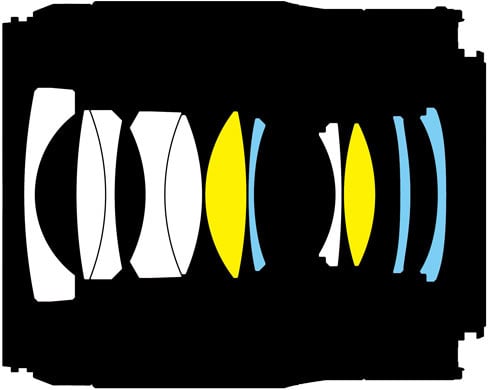
Closest focus distance is 0.25m (9.8in.) with a magnification of 1:5.3. In my test I was able to get down to 1:4.8 at 0.25m with manual focus. The magnification of the new Nikon is not bad but you have only 15cm (5.9in.) of working distance at minimum focus distance. A magnification of 1:10 is achieved at 0.42m giving a working distance of 0.27m with lens hood attached. The F Nikkor achieves 1:4 in manual focus and the Tamron goes down to 1:2.5 but has only 7cm of working distance. [+]
Filter-thread: 62mm. The F Nikkor has 58mm, the Tamron 67mm. [+]
Image stabilization: The lens offers no optical stabilization. But the Nikon Z bodies provide built-in sensor-shift stabilization over 5 axis – plus an optional electronic stabilization in video mode. The F Nikkor has no optical image stabilization built in but the body-based image stabilization of a Nikon Z7 body provides roll, pitch, and yaw correction. Only the Tamron offers built-in stabilization (pitch/yaw) with the Z7 body adding roll compensation. [0]
Auto focus: Yes with built-in AF drive. Manual-focus override is by simply turning the focus ring – if you didn’t assign another operation to this multi-function ring. The focus ring has a variable gearing that allows for very precise manual focus when turned slowly. Unfortunately this feature cannot be switched to linear gearing which makes smooth focus pulling for videographers almost impossible. Focus on the F Nikkor and the Tamron works similarly with the only differences being a linear gearing and that the focus ring does only that: focusing. [+]
Covers full frame/FX or smaller. Same with the alternatives. [+]
Price: The lens has a list price of 949 EUR (incl. 19% VAT) / 850 USD. The F Nikkor goes for almost half the price (500 EUR / 530 USD), the Tamron is at 600 EUR / 600 USD. [+]
Comes with a soft pouch and the lens hood is included, reversible for transport. That’s similar to the F Nikkor but I must say the new pouches for the Z lenses so far are disappointing: the material is flimsy and the pouch has no strings to pull it close. So if you put the lens in your bag it might easily slip out of its pouch and bang around unprotected. That being said, the Tamron does not even come with a pouch. [0]
Distance information is relayed to the camera, so the camera and flashes can do all the advanced exposure-related stuff with this lens. Same for the alternatives. Except that the new Nikon Z 35mm f1.8S does not have distance scale. Do I miss it? Well, sometimes. But you could shoot perfectly without one. [+]
Aperture ring: the multi-function control ring of an S-lens can be assigned to operate the aperture, exposure compensation or focus. It automatically falls back to its customary focus control when the lens is switched to manual focus. Although the lens control ring has not the same benefit as having a focus ring plus a dedicated aperture ring on the lens it gives you more flexibility to control one of the more important shooting parameters directly from a nice ring on the lens. The F Nikkor and the Tamron don’t have an aperture control ring. [+]
Sealing: yes, a rubber grommet at the lens-mount plus further special weather-sealing throughout the construction. Both the F Nikkor and the Tamron only have the sealing at the lens-mount [+]
The score in the “features-department” is 0[-]/2[0]/11[+]. So the lens has a very good feature set. It offers the nifty feature of the multi-purpose control ring and is sealed against the weather like Nikon’s pro lenses.
Three wide angle prime lenses for Nikon
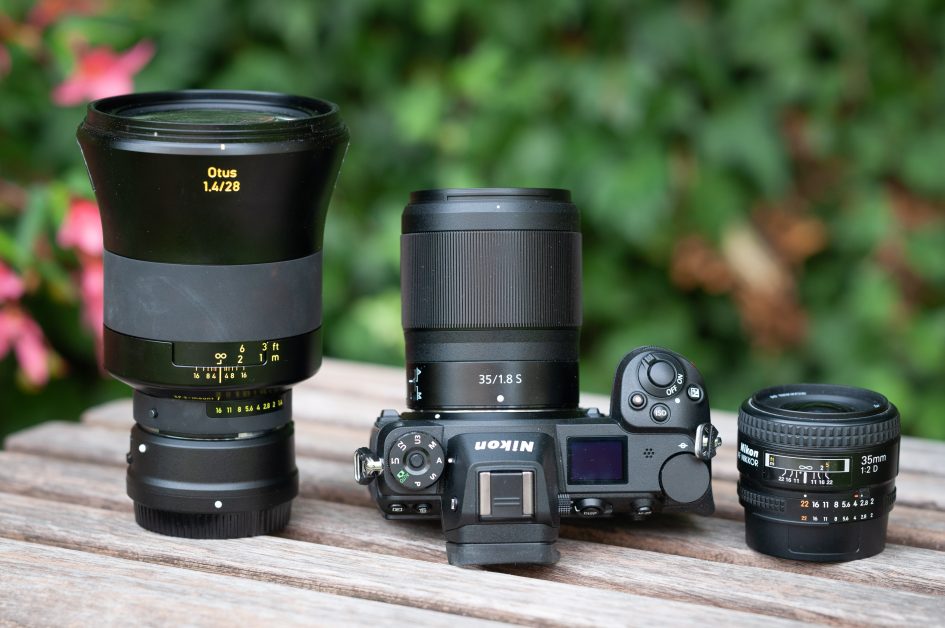
Above from left to right: Zeiss 28mm f1.4 Otus on Nikon FTZ adapter, Nikon Z 35mm f1.8S, Nikon 35mm f2.0D
Alternatives
The market for wide-angle prime lenses is pretty crowded but no other manufacturer offers any lens for Nikon’s Z-mount so far. So for alternatives we have to look at F-mount lenses which can be used mounted on Nikon’s FTZ adapter – adding another 31mm in length and 133g in weight:
- Nikon has the AF-S 35mm f1.8G ED from 2014 for 500 EUR / 530 USD. For more information see my Nikon 35mm f1.8G review where it got a recommendation. You can still get the older AF 35mm f2.0D version from 2003 which is the cheapest, shortest and lightest alternative and sells for 320 EUR / 390 USD. But it doesn’t autofocus on the Z7 and its optical performance is no match for a full-frame 46MP sensor.
- Tamron’s stabilized SP AF 35mm f1.8 Di VC USD goes for about 600 EUR / 600 USD. It’s the only stabilized lens of the alternatives earned a Recommended in my Tamron SP 35mm f1.8 VC review. Its optical stabilization was good for 2 stops on a D810. The Z7 adds roll compensation – which from experience takes a little jitter away but does not add another stop of stabilization. But you might try the Tamron with optical stabilization switched off in which case the Z7’s built-in stabilization should also compensate for yaw and pitch which may be more effective.
That’s it regarding 35mm f1.8 alternatives. The other choices include either going wider to 28mm (offering 12 degrees wider angle of view) or getting lenses with a 2/3 of a stop brighter focal ratio of f1.4 which are all bigger, heavier and normally more expensive than their f1.8 counterparts:
- Nikon offers the AF-S 28mm f1.8G from 2012 (650 EUR / 700 USD) which earned a recommendation in my Nikon 28mm f1.8G review. The problematic focus shift of this lens should be eliminated by the feature of the Z7 to focus stopped down.
They also have the AF-S 28mm f1.4E ED from 2017 which came Highly Recommended in my Nikon 28mm f1.4E review but costs 2000 EUR / 2000 USD. Plus there is the AF-S 35mm f1.4G from 2010 for 1750 EUR / 1700 USD. - Sigma offers the AF 35mm 1.4 DG HSM Art from 2012 for a relatively low price of 750 EUR / 900 USD. See my Sigma 35mm f1.4 Art review where it came Highly Recommended when tested on a Nikon D800. Its weak spot is the performance at the border of the APS-C/DX image-circle where residual spherical aberrations and astigmatism mar the otherwise impressive performance even up to f4.0. If you use it on a 46MP sensor this problem is only going to get worse. Btw.: Including the FTZ adapter the Sigma has a diameter of 77mm, a length of 125mm and a weight of 800g.
- The Zeiss 28mm f1.4 Otus from 2015 is my current reference wide-angle prime lens. But it costs a whopping 4000 EUR / 5000 USD – and it’s manual focus only! But its build quality is unsurpassed and the optical performance is top notch. It earned a Highly Recommended in my Zeiss Otus 28mm f1.4 review.
Another alternative?
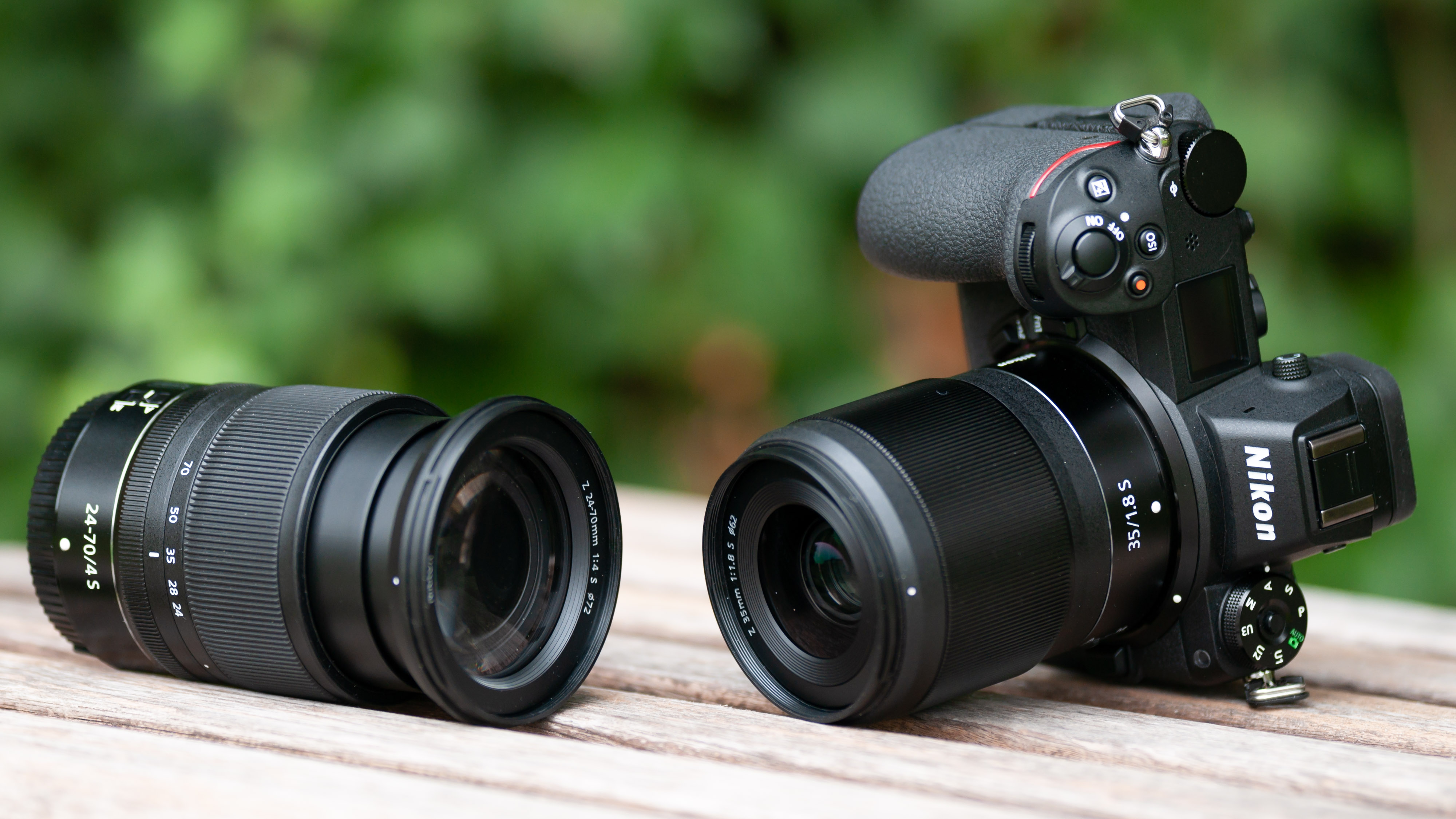
Above: Nikon Z 24-70mm f4S vs. Nikon Z 35mm f1.8S on Nikon Z7
Finally you might also consider the new Nikon Z 24-70mm f4.0S as an alternative. It has the benefit of covering a 2.9x zoom range reaching 2x further at the long end and going 21 degrees wider at the short end. It does offer only an f4.0 focal ratio but is of similar size and weight as the Z 35mm f1.8S, doesn’t need an adapter like the other alternatives above, and offers very good optical performance. Plus it comes pretty cheap if you buy it in a kit together with the Z7 camera (600 EUR / 750 USD). It got a Highly Recommended in my Nikon Z 24-70mm f4S review.
Focus
Focus accuracy and repeatability is critical to consistently produce sharp shots especially with large aperture lenses. Repeatability (the accuracy of focus on the same subject after repeated focus-acquisition) of this lens is very good (measured 98.5% in Reikan FoCal) with no outliers over a series of 40 shots. There is no focus variation whether the lens focuses from a closer distance or from infinity. Interestingly I had to set AF fine-tune of -3 to achieve the best results as my sample exhibited a little back-focus. This sound at odds with a camera that focuses with an embedded phase-detect system on the sensor, but may be influenced by the longitudinal colour aberrations of the lens where the focus of the colors red, green, and blue are slightly different.
The lens focuses in around 0.5 sec from infinity to 0.42m (1:10 magnification), which is pretty fast. Hunting didn’t occur under the well-lit test conditions but under real-life conditions I saw the lens hunt on occasion. The focus/control ring is 38mm wide. Its surface is not rubberized but as it moves super smooth and can easily be operated even with your pinky the finely knurled metal surface is well up to its task. The ring has a slight play.
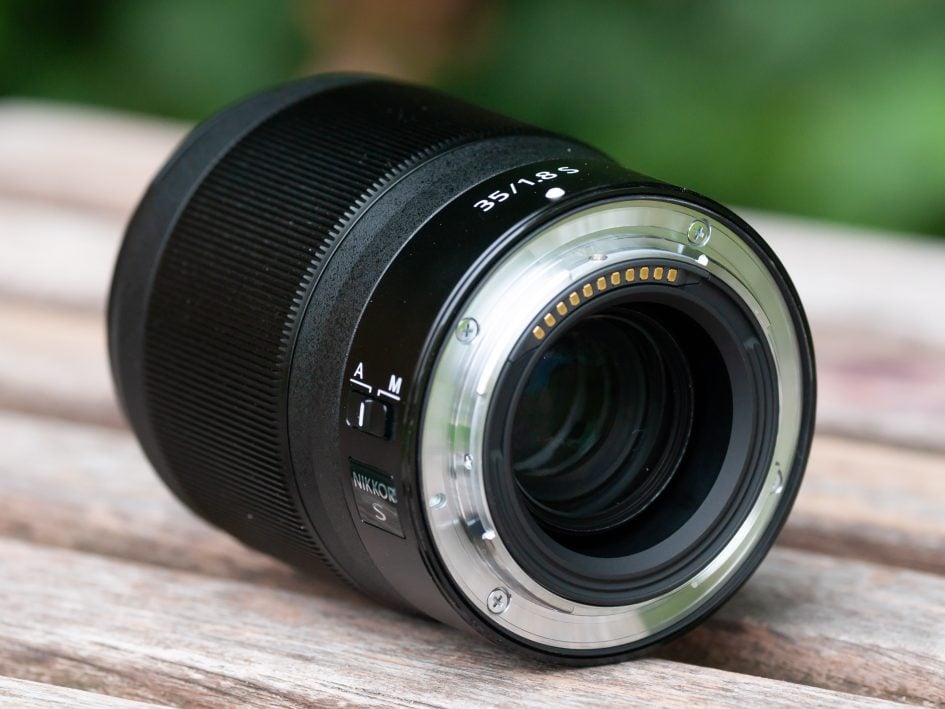
AF-operation of the new lens is barely audible from the outside. But if you record video with the built-in microphone the AF-drive still produces a slight buzz. This lens is clearly not as quiet as the Nikon Z 24-70mm f4S. If you use the control ring on the lens to change the aperture this works smoothly and without noise.
As you pull focus, you’ll notice a very slight focus breathing: the image becomes less magnified at closer focusing distances. When I adjusted the focus from infinity to 0.42m on the new Nikon, I measured a 0.7% decrease in magnification. This is totally inconspicuous and should please videographers.
Image stabilization
To test the effectiveness of the image stabilization with the Nikon Z 35mm f1.8S on a Z7 body, I did a series of 140 test-shots hand-held. I tested with shutter speeds from 1/40 of a second down to 0.8 sec. Shots at 1/40 sec with VR=OFF are used as reference of how good my hand-holding was at the time of the test and Reikan FoCal did the chore of evaluating the sharpness of all shots. Here’re the details: With VR=ON (in camera) the combo produced results down to 1/5 sec (3 stops) which were better than 1/80 sec with VR=OFF. At 0.4 sec there were 40% clearly blurred images and 0.8 sec produced hardly any usable results. This is a 3-4 stop advantage from stabilization. The Nikon Z 24-70mm f4S I had tested earlier had a 4-5 stop stabilization from the Z7 at 70mm focal length.
Next check out my quality results!
Check prices on the Nikon Z 35mm f1.8S at Amazon, B&H, Adorama, or Wex. Alternatively get yourself a copy of my In Camera book or treat me to a coffee! Thanks!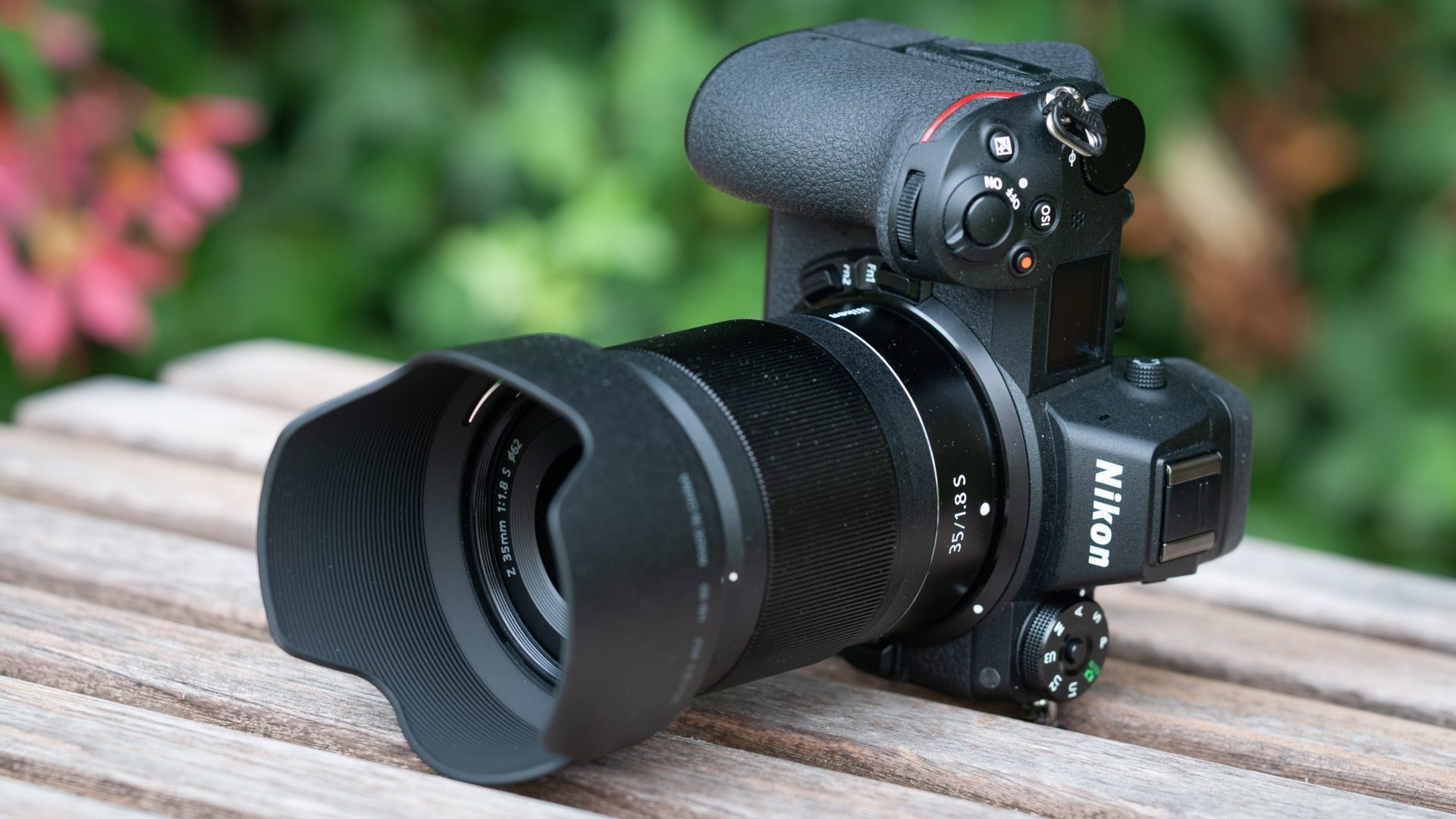
 The Nikon Z 35mm f1.8S is a good mild wide angle prime for owners of Z-series mirrorless bodies: Resolution and contrast is as good as or even better than from the Zeiss 28mm f1.4 Otus - which is no small feat. It also delivers very good close-up performance and retains its high contrast exceptionally well even in contra-light situations. Plus its size and weight makes it a good match for the compact Z-series bodies it's designed for. The new Z Nikkor also focuses fast and reliably and is sealed as thoroughly as the Z 24-70mm f4S. But its relatively strong loCA show up clearly in high contrast situations when the lens is used wide open, and the Bokeh in the farther background can be quite distracting which is a pity for an f1.8 prime lens. These drawbacks of the Z 35mm f1.8S prevent the lens from getting the top rating but it certainly deserves a Recommended!
The Nikon Z 35mm f1.8S is a good mild wide angle prime for owners of Z-series mirrorless bodies: Resolution and contrast is as good as or even better than from the Zeiss 28mm f1.4 Otus - which is no small feat. It also delivers very good close-up performance and retains its high contrast exceptionally well even in contra-light situations. Plus its size and weight makes it a good match for the compact Z-series bodies it's designed for. The new Z Nikkor also focuses fast and reliably and is sealed as thoroughly as the Z 24-70mm f4S. But its relatively strong loCA show up clearly in high contrast situations when the lens is used wide open, and the Bokeh in the farther background can be quite distracting which is a pity for an f1.8 prime lens. These drawbacks of the Z 35mm f1.8S prevent the lens from getting the top rating but it certainly deserves a Recommended!



